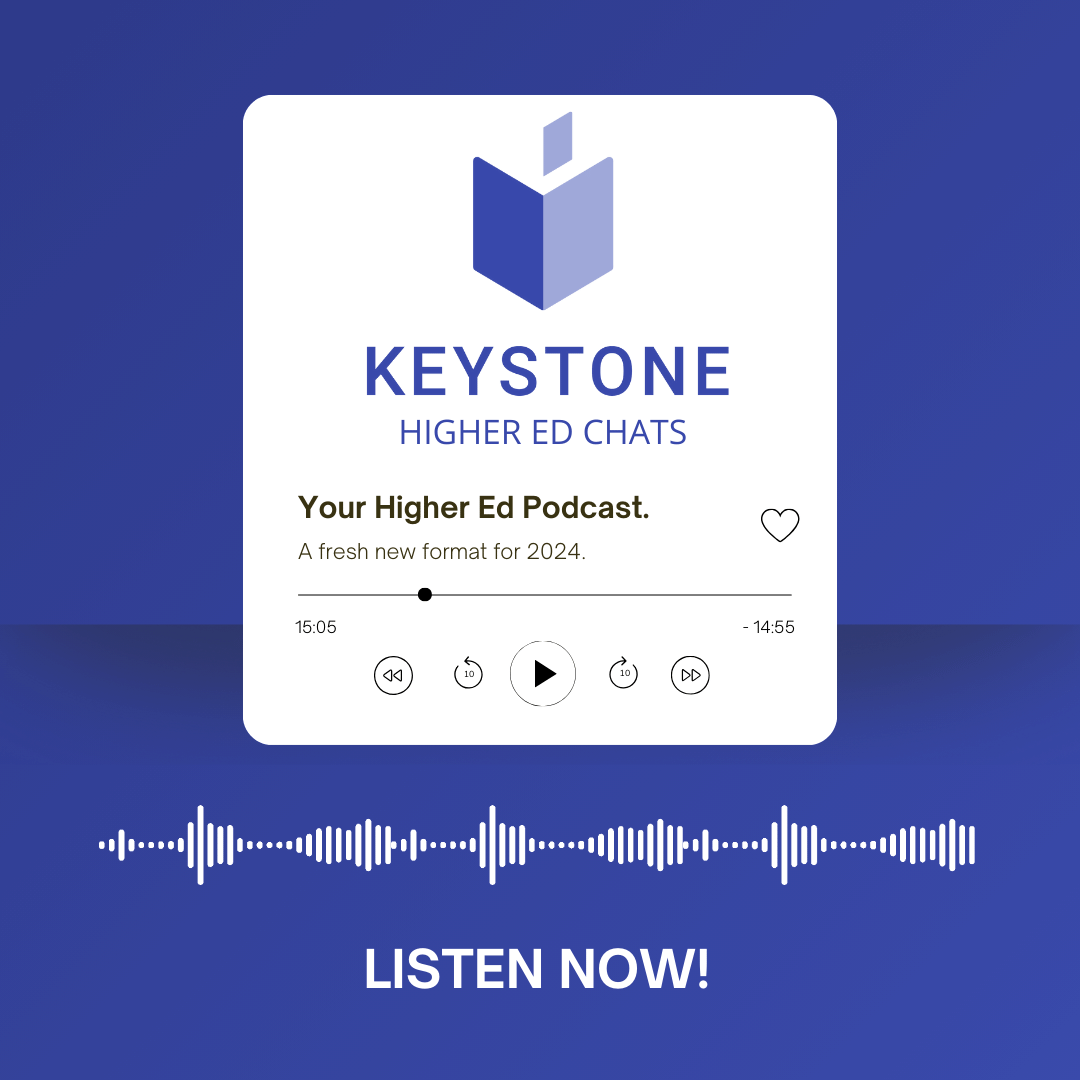- SERVICES
- HIGHER EDUCATION MARKETING
- ENGAGEMENT & ENROLLMENT MANAGEMENT
- STUDENT RECRUITMENT AGENCIES
- PROFESSIONAL EDUCATION & TRAINING
- WHO WE ARE
WHO WE ARE
Learn more about Keystone Education Group, including our leadership structure, why choose Keystone as your educational partner, and company press releases.
QUICK LINKS
- RESOURCES
RESOURCES
Find a range of helpful resources to help with your educational marketing. From on-demand webinars, reports & data, to customer testimonials and our downloadable media kit.
QUICK LINKS
- NEWS
- REQUEST A CALL

- Keystone Higher Education News
- Optimizing Virtual Learning During COVID-19

As a result of the Covid-19 pandemic, most education, work and social interaction has been moved online. With this emerged a new concep; "Zoom-fatigue", which can be both exhausting and taxing on the brain. Humans evolved as social animals, and traditional teaching methods revolve around our ability to be together. Not only have teachers had to pivot to online learning at an uncomfortable pace, but digitally native students are now feeling the effects of too much screen time. We grow up interpreting hand gestures and body language. Most communication and business majors are required to take at least one public speaking course, and for education majors, public speaking is one of the primary requirements.
The multi-window/multi-video panel on platforms like Google Hangout, Skype, or Microsoft Teams makes it extremely challenging to focus on the central speaker. As students multitask in the virtual learning world, their ability to absorb information is restricted. Another issue discussed in a recent National Geographic article is the impossibility of parallel conversations. If you view a single speaker at a time (a Zoom setting option), you can’t recognize how peers behave; something students would typically pick up with peripheral vision. Andrew Franklin, an assistant professor of cyberpsychology at Virginia’s Norfolk State University says, “Traditional phone calls may be less taxing on the brain because they deliver on a small promise: to convey only a voice.” For some students, offering the optional phone call rather than a screen-to-screen interaction can make them feel more comfortable, focused, and confident.
Being mindful of “Zoom fatigue” is essential as faculty rethink their curriculum to meet the virtual learner. Here are some other things to consider when reframing the college test during COVID-19:
Make frequent testing the “new normal.”
Students in a virtual classroom may be experiencing heightened anxiety, so the stressful midterms and finals are perhaps not always the best way to assess their knowledge. When students enter the virtual classroom expecting a short 20-30 minute test at the end of the lecture, it can increase focus and keep them engaged. University administrators do not have a crystal ball that lets them know when the fully online or hybrid teaching model will finally come to a close. To help ease testing anxiety it may be beneficial to try out new testing models, for instance one that can be implemented in class or online, maybe even both at the same time.
You can find more about virtual assessment here: A Comprehensive Guide to Virtual Student Assessment
Utilize the retrieval practice.
According to Scientific American, “retrieval practice” treats testing as an occasion for learning, not an assessment tool. The practice helps learners “stay in their lane,” and prevents them from mixing up the material they are currently learning with the subject matter they learned in the past. Numerous studies indicate this practice can benefit virtual learners and higher education teaching methods in general. Jeffrey Karpicke, a professor of cognitive psychology at Purdue University, explains: “Recalling information we've already stored in memory is a more powerful learning event than storing that information in the first place. Retrieval is ultimately the process that makes new memories stick.”
Instead of cramming knowledge into the students’ brains, retrieval practice helps you pull knowledge out. Having to recall and write down an answer to a question rather than Googling it or reading it out of a textbook significantly improves the long-term, in-depth understanding of the subject matter. Instead of relying solely on short quizzes and tests, professors can also try flashcards, practice problems, and writing prompts to diversify the content delivery.
Increase student engagement.
Build interactivity in the virtual classroom using case studies, frequent short quizzes, breakout groups, and whiteboards with chat capability. One way to combat the previously mentioned Zoom fatigue is to assign part of every lecture to a designated student group. In a traditional classroom, the professor lectures and the students listen, but many voices are heard during each session. By assigning a specific group project for each class, professors have the ability to sit back and listen as peers present the content to each other. With different time zones and geographic locations, it is vital to build student groups logistically.
Want to learn how to make online education more interactive?
5 Ways to Make Virtual Learning More Interactive
Give your students options.
In an attempt to remove the all-encompassing final semester test, offer your students options like group or individual presentations, reflection papers, fact sheets, survey, or focus group reports. Every student has learning strengths and weaknesses, and professional educators are highly skilled in meeting expectations and adapting to each student’s learning style. From a virtual distance, the skills college professors learned in their degree programs are not applicable as there are very few “Teaching Students from a Laptop 101” courses.
Professors must maintain authority in the virtual learning landscape, but it is also crucial to show more humility and remind students this transition impacts everyone. As faculty are forced to rethink lesson plans, students are tasked with the challenge of learning from behind a computer screen. Show them you care by providing alternative testing and assessment methods, rather than the traditional final.
It has been said over and over again, “We’re all in this together.” 2020 has not been an easy year in higher education, but professors are a resilient group of individuals. The main goal is to prepare college students for success after graduation, and testing is just one small part of the academic experience. Virtual learning is certainly not the preferred method for most students (see State of Student Recruitment 2020 Report), but universities worldwide are playing the cards they were dealt during COVID-19 and for millions of virtual learners, that means implementing new testing methods. When communities are finally ready to get back in class face-to-face, they will be more versatile, focused, and collaborative learning, thanks to the pivots professors made during the virtual learning experience. This year is one we will never forget, but one that makes us stronger in the end.
More about:
Related Tags
Just For You
Top Picks
Higher Ed Chats Podcast
Listen to the latest episodes of our Higher Ed Chats Podcast - new format for 2024. Hear from Higher Ed thought-leaders from around the world!

Webinar: Dos & Don'ts of Higher Ed Social Media
.png?width=500&name=Social%20Media%20Webinar%20March%2024%20Banners%20(3).png)
Join our live webinar on 27th March to hear from a panel of Higher Ed Social Media experts.
Subscribe
to get the latest news and updates





